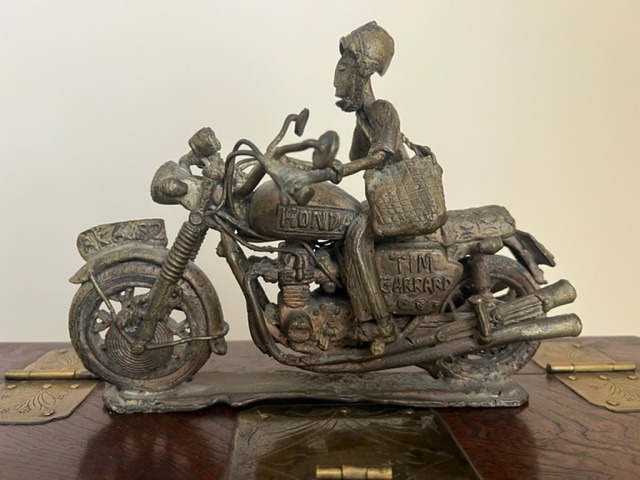The Manhyia Museum in Kumasi has taken receipt of one hundred and thirty (130) more gold and bronze art works from South Africa and Britain.
These artifacts created in Kumasi and parts of the Asante Kingdom from the 1870s were returned to the Asantehene, Otumfuo Osei Tutu II at the Manhyia Palace and to the museum.
The pieces, aged between 45 and 160 years old, reflect governance systems in villages and towns as well as the socio-economic importance of gold.
The Asantehene, receiving the items, expressed his gratitude to the delegation of AngloGold Ashanti, led by its Chief Corporate Affairs and Sustainability Officer, Stuart Bailey during the presentation.

Mr. Bailey was joined by the Managing Director of the Obuasi mine, Samuel Boakye Pobee and former MP of Obuasi Edward Ennin to make the special presentation.
The Asantehene noted that though AngloGold Ashanti purchased the objects at the open markets, they still thought it appropriate to give back to the source from which they were taken.
The One hundred and ten (110) pieces brings their restituted objects in Kumasi to 140 from the original collection of the Barbier-Muller Museum in Geneva through its founding collector, Josef Muller from 1904.
The other 25 separate objects are from one of Britain’s art historians and curators, the 86-year Hermione Waterfield.
She had joined the famous art auction house, Christie’s in London in 1961 and in 1971 established the Tribal Art Department.
Waterfield’s donation, according to the Historian and Director of the Manhyia Palace Museum, Ivor Agyeman-Duah, include 46-inch wooden fontomfrom drum that were part of the loot from the Palace.

These items were taken away by British Colonial Officer, Sir Cecil Hamilton Armitage who led the advance force in the siege of Kumasi in 1900 or what became the Yaa Asantewaa War and who later became British Colonial Governor of The Gambia.
Waterfield inherited these drums and owned fourteen other gold weights purchased between 1967 and 1973, including from Christie’s auction.
Mr. Agyeman-Duah explains that the authority on the returned objects from South Africa “and indeed of metal or goldsmith arts in West African was the late British art historian and archaeologist, Timonthy Garrand who lived for a time in Kumasi and Accra and also Bouake in the Ivory Coast and together with the Octogenarian Waterfield, have helped shaped our understanding not just of gold and bronze collecting but the heritage of their manufacturing processes.”
Of Waterfield’s donation include the famous brass self-portrait of Timonthy Garrand on his motorbike in Kumasi by Yaw Amankwa in 1980.
Mr. Agyeman-Duah, who last October signed the deaccession papers with Waterfield in London, says among other great works that will be on display at the palace museum will include those of Ghanaian and African masters, Ablade Glover, El Anatsui, Ato Delaquis, Nee-Owoo, Anthony Kwame Akoto, Vincent Koffi and Edwin Kwasi Bodjawah.
Source: Emmanuel Bright Quaicoe

